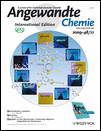Highly Selective Catalytic Conversion of Phenolic Bio-Oil to Alkanes†
This research was performed in the framework of the Network of Excellence IDECAT.
Graphical Abstract
Oil and water: A new energy-efficient and atom-economical catalytic route for the production of alkanes and methanol by upgrading the phenolic fraction of bio-oil has been developed. The one-pot aqueous-phase hydrodeoxygenation process is based on two catalysts facilitating consecutive hydrogenation, hydrolysis, and dehydration reactions.
Abstract
Oil and water: A new energy-efficient and atom-economical catalytic route for the production of alkanes and methanol by upgrading the phenolic fraction of bio-oil has been developed. The one-pot aqueous-phase hydrodeoxygenation process is based on two catalysts facilitating consecutive hydrogenation, hydrolysis, and dehydration reactions.





